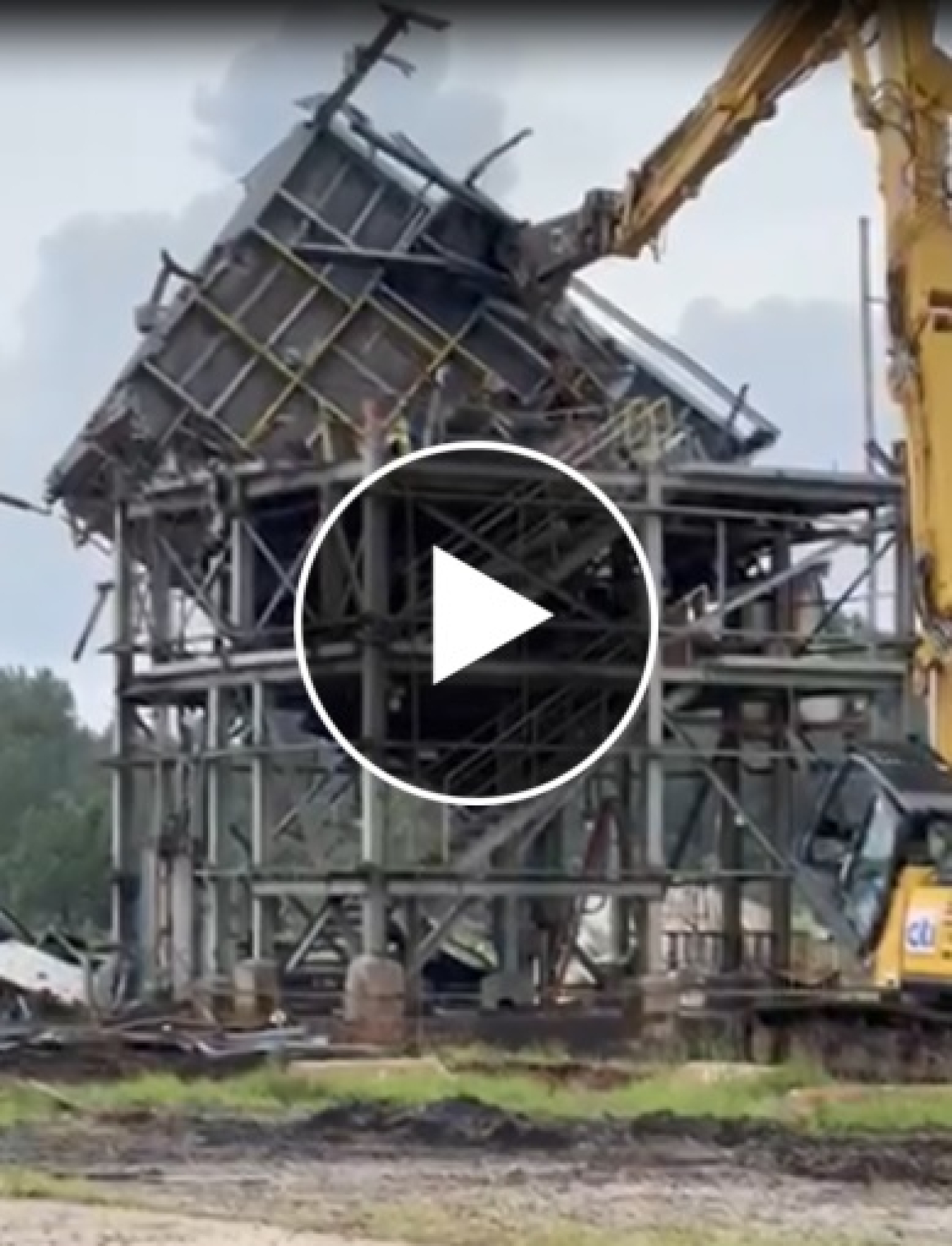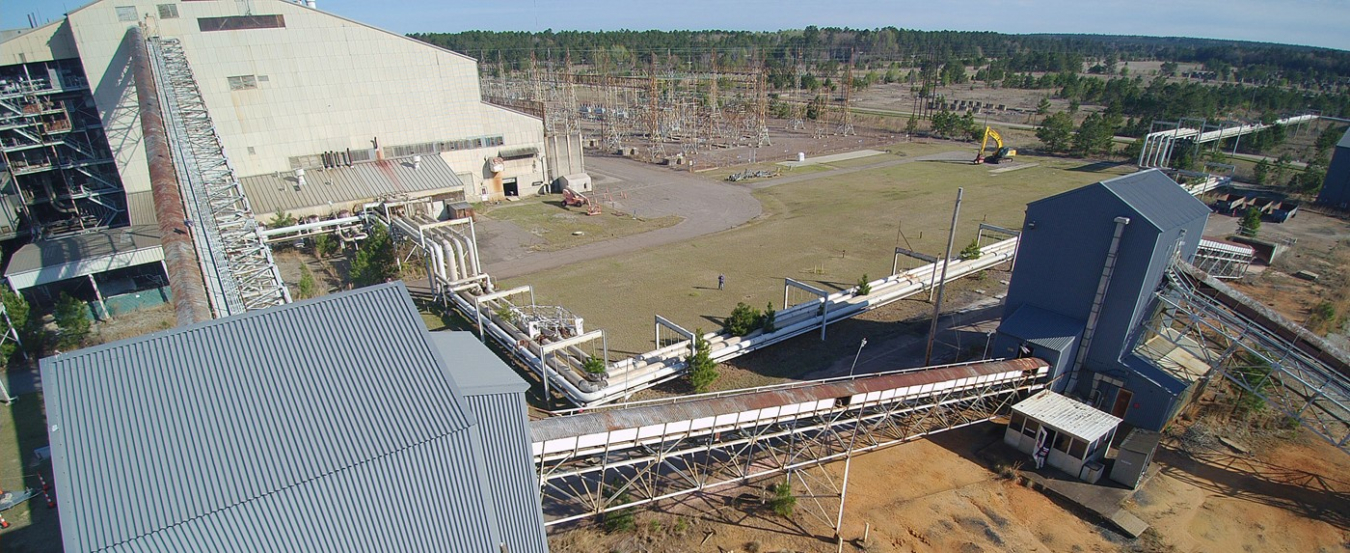EM crews at the Savannah River Site (SRS) recently demolished a former coal handling system whose removal further shrinks the legacy footprint at the 300-square-mile nuclear reservation.
Office of Environmental Management
September 13, 2022AIKEN, S.C. – EM crews at the Savannah River Site (SRS) recently demolished a former coal handling system whose removal further shrinks the legacy footprint at the 300-square-mile nuclear reservation.
EM workers have achieved an 85% reduction in the SRS operational footprint, a percentage that will grow as workers with EM contractor Savannah River Nuclear Solutions (SRNS) continue the decommissioning and demolition of facilities in the site’s massive D Area.
“We’re steadily working towards the goal of having all of D Area’s 210 acres returned to its natural state, prepared for industrial use if needed,” said Grady Friday, a subject matter expert with SRNS Area Completion Projects (ACP).
D Area facilities once produced heavy water for nuclear reactors and generated steam and electricity to support much of what was previously known as the Savannah River Plant, which was developed in the 1950s. To date, crews have torn down and removed more than 60 D Area structures.
In the latest D Area cleanup, workers knocked down a coal handling system that fed four massive boilers. The system consisted of hoppers, coal feeders, conveyors, a coal crusher and three support structures.
“Trains, and later trucks, brought in a huge amount of coal each year to D Area when it was operational,” said Friday. “The only way to quickly and effectively transport tons of coal 100 feet up in the air and into that huge powerhouse was on those conveyor belts.”

WATCH TEARDOWN VIDEO: EM crews knock down the Coal Transfer Building in the D Area at the Savannah River Site. The building is part of a coal transfer system workers recently removed.
Following the demolition project, SRS transferred the system’s conveyor belts to the nonprofit Savannah River Community Resource Organization (SRSCRO). Combined, the belts were approximately 2,000 feet long.
Belts of that size and type are in high demand around the country and would almost immediately be offered to a company within nearby counties supported by the SRSCRO, according to Friday.
The belts date back to the 1980s when the coal transfer system was last refurbished.
“Surprisingly, they are still in good condition given their age and constant exposure to the elements,” said Steve Conner, SRNS ACP project manager. “Whenever possible, we do our best to separate recyclable or reusable materials for repurposing from the numerous structures that have been decommissioned and demolished over the years.”

In past Savannah River Site operations, a coal handling system in the site’s D Area delivered coal to the top of the D Area Powerhouse where it was burned to produce power and steam. Workers have demolished the system’s conveyors and associated buildings pictured here in gray. The site provided salvaged conveyor belts to the nonprofit Savannah River Community Resource Organization for beneficial reuse in the community.
Conner noted that the SRSCRO has preserved and transferred a wide variety of items to benefit nearby businesses since the organization’s creation in 1993. They include tools, generators, oil, transformers, railroad tracks and even entire light-duty metal buildings originally assembled using nuts and bolts.
Multiple structures from the coal transfer system plus three small support buildings created nearly 84,000 cubic feet of metal, which has been relocated to a salvage site for recycling.
“We’ve accepted the direction and responsibility to not just level and remove buildings at SRS,” said Conner. “We want to effectively and responsibly do so for the benefit of the environment we live and work in, as well as for those residing in communities surrounding the Savannah River Site. It’s not just a task to safely complete. It’s the right thing to do.”
To receive the latest news and updates about the Office of Environmental Management, submit your e-mail address.

